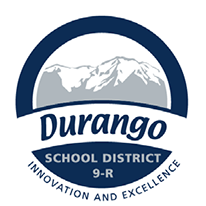The method is called Orton-Gillingham, a Science of Reading and structured literacy approach through the Institute for Multi-Sensory Education (IMSE) that helps students connect letters, sounds, and meaning through daily practice. It breaks reading and spelling down into smaller skills involving letters and sounds and then builds on these skills over time.

In a Needham Elementary classroom on Aug. 28, Tabor’s work with a small group of third-grade students was active and lively. Students listened attentively and spoke together out loud, tapped out words with their fingers and fists on the table, and practiced writing. The method also includes tracing letters in sand or using tiles. That’s the multi-sensory part: Seeing, hearing, and touching at the same time.
“We see ‘ah-ha’ moments happen all the time,” said Rachel Tabor, a DSD reading interventionist and master instructor. “It’s pretty amazing when kids are learning through all these different pathways, and how quickly they are picking up on reading and writing. I had one first-grader at the beginning of last year, and she looked at me and said, ‘I didn’t know I could read!’ because it was the first time she had blended any sounds together. It’s pretty magical to see it in action.”
A third-grade student taps out word sounds on a worksheet on Aug. 28, 2025, at Needham Elementary School.
DSD launched districtwide training in 2021 so every K-2 teacher would use the same strategies, language, and pacing. Teachers also receive coaching, refresher courses, and classroom support to keep the program strong.
“If teachers are all using the same language, strategies, and pacing, it creates a seamless experience for students,” said Laurie Rossback, DSD’s Executive Director of Curriculum, Instruction, and Assessment. “As we made more efforts to create district-wide consistency, we started seeing real, lasting growth.”
Learn more about the IMSE case study of our district.


